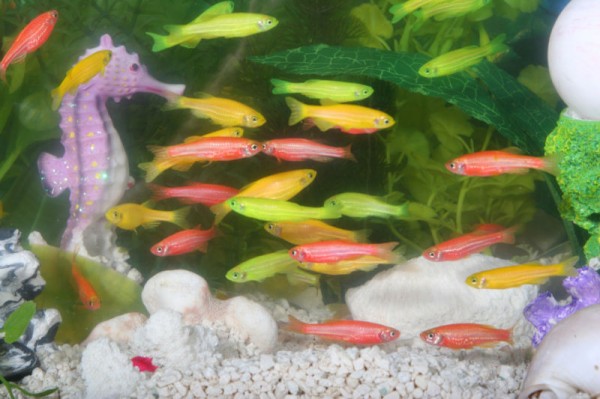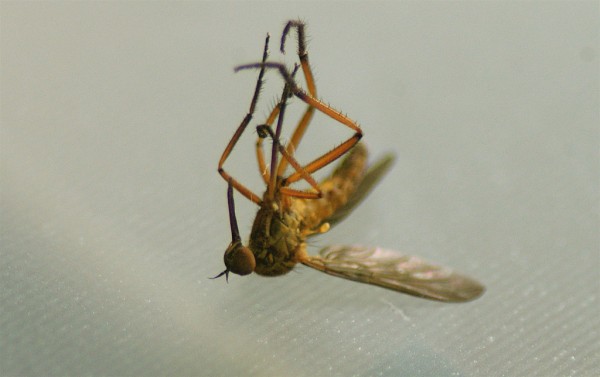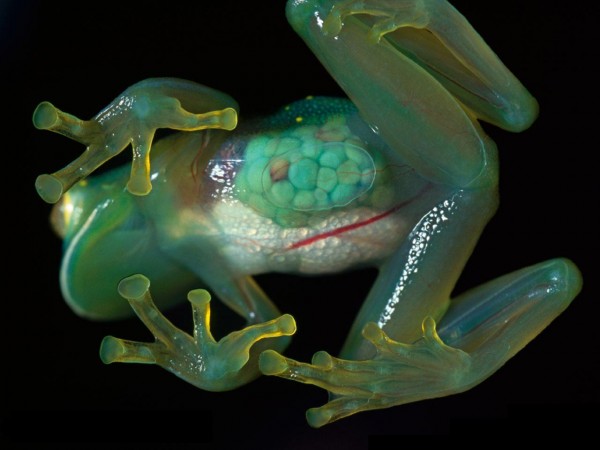This is not an exhaustive list of genetically engineered animals like bovine with massive growth and milk or the alergy free cats and super salmons. Here are probably best examples of how far bio-science can go with DNA technology and genetic re-engineering. The fundamental unit to control different properties of an organism are millions of genes in its DNA. And it is possible to isolate every single gene. Thus any biological property that exists in any living thing in any living world could be brought into any other living thing even of any other world.
1. GloFish

Source
The GloFish is a patented brand of genetically modified (GM) fluorescent zebrafish with bright red, green, and orange fluorescent color. The original zebrafish from which the GloFish was developed measures three centimeters long and has gold and dark blue stripes. In 1999, Dr. Zhiyuan Gong and his colleagues at the National University of Singapore were working with a gene called green fluorescent protein (GFP), originally extracted from a jellyfish, that naturally produced bright green bioluminescence. They inserted the gene into a zebrafish embryo, allowing it to integrate into the zebrafish’s genome, which caused the fish to be brightly fluorescent under both natural white light and ultraviolet light. Their goal was to develop a fish that could detect pollution by selectively fluorescing in the presence of environmental toxins. It is the first genetically modified animal to become publicly available as a pet.
2. Vacanti Mouse

Source
The Vacanti mouse was a laboratory mouse that had what looked like a human ear grown on its back. The “ear” was actually an ear-shaped cartilage structure grown by seeding cow cartilage cells into a biodegradable ear-shaped mold. The earmouse, as it became known as, was created by Dr. Charles Vacanti, at the University of Massachusetts in 1995. Created to demonstrate a method of fabricating cartilage structures for transplantation into human patients, a resorbable polyester fabric was infiltrated with bovine cartilage cells and implanted under the skin of a hairless mouse. The mouse itself was a commonly used strain of immunocompromised mouse, preventing a transplant rejection
3. Sudden-Death Mosquito

Source
Oxitec which is a British bio-tech company, has created genetically modified mosquitoes, which are programmed for sudden, early death. Oxitec’s technology is a variation of a proven process called “sterile insect technique” It involves irradiating male insects, causing mutations that make them sterile. When released into the wild, they mate with females passing on lethal genes which either kills the female or at least kills the youngs in her so then she fails to reproduce . Scientists at this British bio tech company said they have evidence that their genetically modified mosquitoes can by this way for sure control the spread of dengue fever.
4. Dolly the Sheep

Source
Not so cool or disturbing enough but dolly would hit this list for sure since she was the first ever cloned animal which means that she was produced from a single microscopic cell from a single parent (who hadn’t mated of-course). Cloning techniques might be used widely now in some part of worlds for food but dolly remains remarkable in being the first mammal to be cloned from an adult somatic cell, using the process of nuclear transfer. Normally off-springs are a result of interaction of sex cells but in case of dolly’s birth, sex cells weren’t involved. She was cloned by Ian Wilmut, Keith Campbell and colleagues at the Roslin Institute near Edinburgh in Scotland. She was born on 5 July 1996 and she lived until the age of six. She has been called “the world’s most famous sheep” by sources including BBC News and Scientific American. To good, dolly was fertile and produced 6 lambs in total. She died in 2003, living about half as long as a typical sheep. She developed a lung disease common in older sheep.
5. See-Through Frog

Source
Dissecting animals for science has sparked controversies worldwide, even prompting some companies to create computer simulations as cruelty-free alternatives. For high school students everywhere, this revealing amphibian may be a cut above regular frogs. That’s because the see-through frog does not require dissection to see its organs, blood vessels, and eggs. You can see through the skin how organs grow, how cancer starts and develops. It’s a miracle of genetic engineering and surely a cool mutant gift to students.